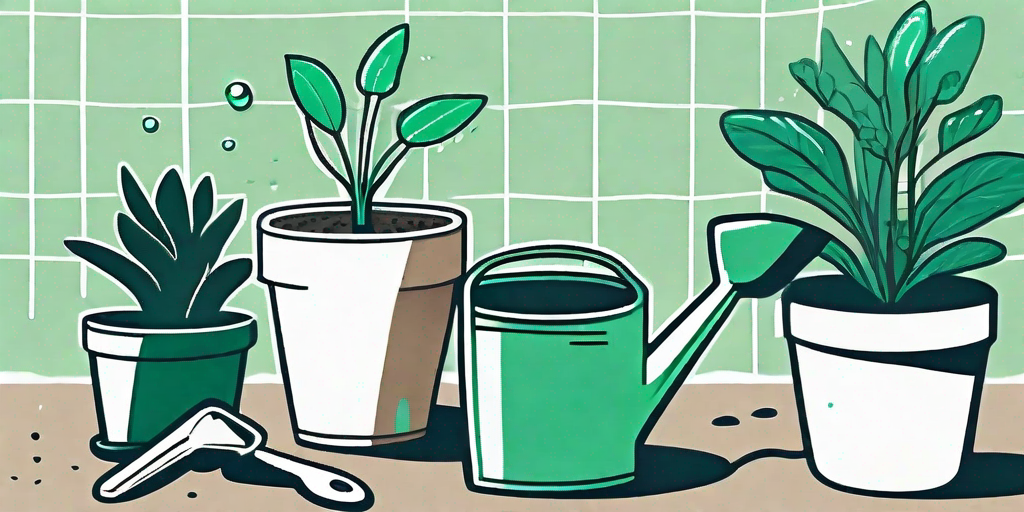
Waterlogged soil can be a gardener's worst nightmare. It's like trying to grow a cactus in a swimming pool. Not only does it make your plants unhappy, but it can also lead to a host of other problems, including root rot and the dreaded fungus gnats. But fear not, dear green thumbs, for we have the solutions to turn your swampy soil into a well-drained wonderland.
Understanding the Problem
First things first, let's understand why your potting mix might be holding too much water. It's not because it's feeling clingy or has separation anxiety. No, it's usually due to a lack of proper drainage or the use of a potting mix that's too dense.
Plants, like humans, need a balance of air and water to survive. If the soil is too waterlogged, the roots can't breathe, and they start to rot. It's like trying to breathe underwater without a snorkel. Not fun, right?
Signs of Overwatering
So, how do you know if your soil is holding too much water? Well, aside from the obvious sign of water pooling on the surface, there are a few other tell-tale signs. Your plants might start to look a bit peaky, with yellowing leaves and stunted growth. And if you notice a funky smell coming from your pot, it's probably not your plant's new perfume. It's more likely a sign of root rot.
Another sign is the presence of fungus gnats. These little pests love damp soil and can quickly become a nuisance. If you see them flying around your plants, it's a good indication that your soil is too wet.
Fixing the Issue
Now that we've diagnosed the problem, let's get to the fun part: fixing it. Here are some tips to help you say goodbye to soggy soil.
Improve Drainage
The first step is to improve the drainage in your pots. This can be as simple as ensuring your pots have sufficient drainage holes. If they don't, it's time to get out the drill and make some. Just be careful not to turn your pot into a colander.
Another way to improve drainage is by adding a layer of coarse material, like gravel or broken pottery, to the bottom of your pots. This helps to prevent the drainage holes from getting clogged with soil.
Choose the Right Potting Mix
Not all potting mixes are created equal. Some are more water-retentive than others. If your soil is staying too wet, it might be time to switch to a mix that drains more freely.
Look for a potting mix that contains perlite or vermiculite, as these materials help to improve drainage. You can also add these materials to your existing potting mix to help it drain better.
Preventing the Problem
Prevention is always better than cure, as they say. Here are some tips to prevent your soil from becoming too waterlogged in the first place.
Water Wisely
One of the main causes of waterlogged soil is overwatering. It's easy to do, especially if you're a bit overzealous with the watering can. But remember, plants are not fish. They don't need to be submerged in water.
The key is to water thoroughly but infrequently. Wait until the top inch of soil is dry before watering again. And when you do water, do so slowly, allowing the water to soak in rather than run off the surface.
Choose the Right Pot
The type of pot you use can also affect how well your soil drains. Plastic pots tend to retain more water than terracotta pots, for example. So, if you're having issues with waterlogged soil, it might be worth switching to a different type of pot.
Also, make sure your pot is the right size for your plant. A pot that's too large can hold too much water, while a pot that's too small can restrict root growth and limit drainage.
FAQs
- Why is my potting mix always wet?
Your potting mix might be staying wet due to overwatering, poor drainage, or the use of a water-retentive potting mix. It's important to address these issues to prevent problems like root rot and fungus gnats. - How can I improve the drainage in my pots?
You can improve drainage by ensuring your pots have sufficient drainage holes, adding a layer of coarse material to the bottom of your pots, and using a well-draining potting mix. - How often should I water my plants?
This depends on the type of plant and the conditions it's growing in. However, a good rule of thumb is to wait until the top inch of soil is dry before watering again.
So there you have it, folks. With these tips, you can turn your soggy soil into a well-drained paradise for your plants. Remember, the key is balance. Just like you wouldn't want to live in a house that's constantly flooded, your plants don't want to live in waterlogged soil. So, let's give them the home they deserve. Happy gardening!















